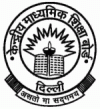
Central Board of Secondary Education
(CBSE Class XII) : Economics Syllabus
Part A : Introductory Microeconomics
Unit 1: Introduction 10 Periods
Meaning of microeconomics and macroeconomics
What is an economy? Central problems of an economy : what, how and for whom to
produce; concepts of production possibility frontier and opportunity cost.
Unit 2: Consumer Equilibrium and Demand 32 Periods
Consumer's equilibrium – meaning of utility, marginal utility, law of
diminishing marginal utility, conditions of consumer's equilibrium using
marginal utility analysis. Indifference curve analysis of consumer's
equilibrium-the consumer's budget (budget set and budget line), preferences of
the consumer (indifference curve, indifference map) and conditions of consumer's
equilibrium.
Demand, market demand, determinants of demand, demand schedule, demand curve,
movement along and shifts in the demand curve; price elasticity of demand -
factors affecting price elasticity of demand; measurenment of price elasticity
of demand – (a) percentage-change method and (b) geometric method (linear demand
curve); relationship between price elasticity of demand and total expenditure.
Unit 3: Producer Behaviour and Supply 32 Periods
Production function: Total Product, Average Product and Marginal Product.
Returns to a Factor.
Cost and Revenue: Short run costs - total cost, total fixed cost, total variable
cost; Average fixed cost, average variable cost and marginal cost-meaning and
their relationship.
Revenue - total, average and marginal revenue.
Producer's equilibrium-meaning and its conditions in terms of marginal
revenue-marginal cost.
Supply, market supply, determinants of supply, supply schedule, supply curve,
movements along and shifts in supply curve, price elasticity of supply;
measurement of price elasticity of supply – (a) percentagechange method and (b)
geometric method.